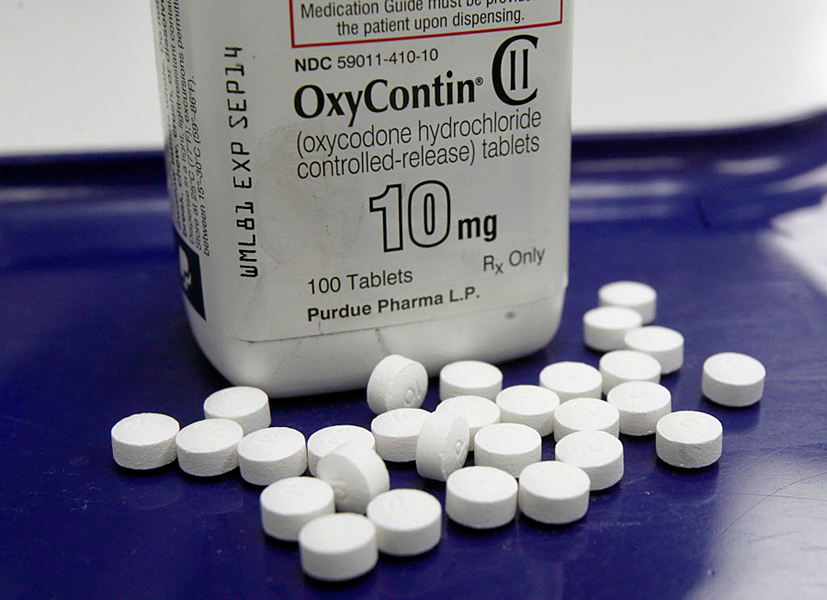Opioid prescriptions are declining. Will it ease the addiction epidemic?
Loading...
In America's opioid epidemic, a news analysis of several sources reflects a glimmer of hope.
For the first time in two decades, the number of opioid prescriptions has declined, an analysis of data by The New York Times found Friday.
Spurred by increased public concerns about the dangers of opioids, the drop in the number of prescriptions reflects a shift in attitude among physicians, now more carefully weighing the drugs' effectiveness as pain medication against their high potential for addiction. Yet experts are unsure how immediate an impact that fewer prescriptions will have on the crisis.
"The deaths [have still] been rising," Sabrina Tavernise, one of the two authors of The New York Times article, told PBS NewsHour Saturday. In 2014, there were "28,000 opioid deaths, about 18,000 are prescription and 10,000 are heroin and other illegal drugs," she said. "And overprescribing [has] been very closely associated with the rise in deaths and the rise in overdoses."
"The hope is that the decline in the prescribing is sort of a harbinger or a signal that the life cycle of this epidemic maybe on the down [slope] now," said Tavernise
The analysis done by Tavernise and Abby Goodnough found opioid prescriptions – which include hydrocodone and oxycodone – have declined since they peaked in 2012. Following the introduction of OxyContin in 1996, the number of opioids prescribed in the United States "skyrocketed," according to a presentation Nora Volkow, the director of the National Institute on Drug Abuse, gave the Senate Caucus on International Narcotics Control in 2014. In 1991, the number of opioid prescriptions was 76 million. In 2013, it was 207 million, "accounting for almost 100 percent of the world total for hydrocodone and 81 percent for oxycodone," wrote Dr. Volkow. Starting in 2013, however, the number of opioids prescribed nationally declined by at least 12 percent.
IMS Health, America's largest provider of prescribing data, found a 12 percent decrease in opioid prescriptions since 2012, according to The New York Times. Symphony Health Solutions, another medical data firm, found an 18 percent decrease since 2012. South Dakota was the only state where opioid prescriptions increased, according to IMS. The sharpest drops were in states at the center of the heroin epidemic, such as West Virginia, according to the Times.
As West Virginia and other states including Vermont and New Hampshire contended with the heroin problem within their borders, Washington started its own efforts. Congress is considering a slew of bills meant to attack the problem. The Centers for Disease Control passed a new set of guidelines to encourage doctors to think hard before prescribing opioids. Although the presidential primaries shone a spotlight on the problem, raising awareness about the impact addiction can have on individuals, families and communities, it is unclear how soon a decline in prescriptions will equal fewer overdoses and deaths.
"Many experts say that the drop in prescribing is at best a half victory, in light of the rise of deaths from heroin and illicit fentanyl, a powerful synthetic painkiller," wrote The New York Times. "Some addicts who started with prescription painkillers are merely turning to such street drugs or getting their hands on prescription drugs by other means."
Opioid abusers might turn to heroin because its effect is stronger than prescription medication, and it can be cheaper or more easily obtainable than prescriptions, according to Volkow's 2014 presentation.







